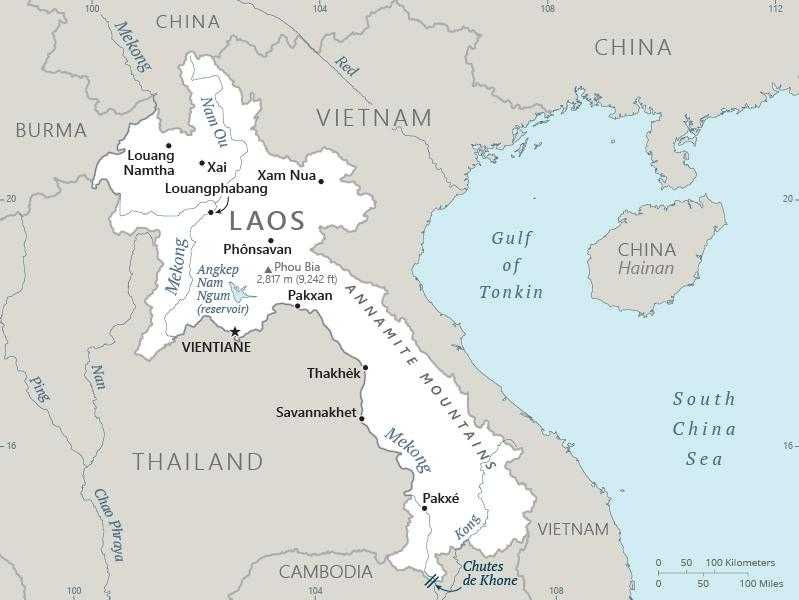On Luang Prabang, where time pools and traditions persist
Laos: Ancient or former capitals have a habit of outdoing their usurpers.
So this #luangprabang caper is a bit alluring. Quite a bit. It presents a fascinating tableau where French colonial grandeur meets Laotian grace. Colonial mansions, with their European lines softened by the tropical night, stand alongside temples with their distinctive peaked roofs and wood-shuttered windows.
Accordingly, there is a civility to the place you rarely see in these parts. Not that the rest of #laos🇱🇦 is uncivil. Rather, here the tuk tuk drivers don't hassle; they ask. And
Big picture, Laos is landlocked. It’s a Communist nation of almost 8 million people, and sits at Southeast Asia's crossroads between China, Myanmar, Thailand, Vietnam, and Cambodia. Vientiane is the capital.
And despite the region's turbulent history of war and colonial rule, its the former royal capital of Luang Prabang (population 30,000: located 200km northwest of the Vientiane) that remains a tranquil oasis evoking an idealised vision of traditional Southeast Asian life.
Mount Phousi overlooks Luang Prabang. Visitors climb it for the stunning sunset vista. From the summit, the Mekong River appears as a ribbon of liquid gold in the evening light, snaking between misty mountains that fade into watercolour depths. The view reveals the city’s perfect positioning – a peninsula embraced by rivers, protected by peaks, and preserved by geography.

Down in the streets of the Old Town the air feels fresher and clearer. So too the streets, which are meticulously swept each night, a detail that speaks volumes about the town’s character.
Where time pools and traditions persist
Twenty years of UNESCO patronage has cultivated this atmosphere, but it's the 600 years of royal history that provides the foundation. Like Kyoto, another former imperial capital that arguably outshines its successor (Tokyo), Luang Prabang carries its heritage with elegant restraint. The distant past – be that indigenous and colonial – has been so faithfully restored and retained without resorting to pastiche.
To wit, a 1952 Citroen, gleaming black against whitewashed walls, stands sentinel outside the 3 Nagas Hotel. The scene could be from another era – string lights casting warm pools on the street, red shutters half-closed against the evening air, the Laotian flag hanging still in the tropical night. Here, preservation isn't a museum piece; it's a living, breathing art.

The resulting vibe is graceful but refined in a way unseen so far in my tour of #cambodia and #laos🇱🇦.
As night falls, the street food market transforms Sisavangvong Road into an aromatic journey. Smoke rises from grills laden with fresh fish and sizzling water buffalo meat. Women tend briquette-warmed pots of swirling broth and bunches of noodles: known locally as fer, the Laotian version of the more familiar Vietnamese pho. Papaya salad makers pound wooden mortars. It’s like you’re wandering through an impromptu percussion performance; one that tempts taste buds at every turn.
At least one morning during your stay, you need to set the alarm early. That’s because dawn arrives with a ceremony that has survived centuries of change: the Tak Bat.

Barefoot monks emerge from their temples in single file, their orange robes burning like flames against the cool morning air. They move in silence, ancient bowls cradled in their hands. Local women kneel on woven mats, heads bowed in reverence, offering sticky rice and simple foods – each grain a prayer, each gesture an affirmation of faith.
In a sign of the times, novice monks now lead tours around Luang Prabang providing a culturally immersive experience and unique insights into the life of a Buddhist monk. The practice also helps ease their potential transition from temple life to that of a layperson.
What Luang Prabang offers the thoughtful traveller is increasingly rare in our accelerating world: a chance to witness tradition not as a preserved specimen but as a living, breathing entity. The morning alms ceremony isn't a reenactment; it's a ritual that has never ceased, adapting to changing times while maintaining its essential spirit. In this lies a profound lesson about resilience and authenticity.

Unlike other Southeast Asian cities that race toward modernity with fevered determination, Luang Prabang seems to inhale deeply and remembers to breathe. The result is a rare authenticity that permeates everything from the marching monks at dawn, to morning markets and the evening's gentle sensory rhythms.
The UNESCO preservation that saved these streets has done more than protect architecture – it's preserved a way of being, a pace of life, a quality of attention that feels increasingly precious in our modern world.
Might there be lessons here in how to move forward while keeping hold of what matters most? The past doesn't feel distant or staged. In Luang Prabang it lives in every sunrise, every offering, every shared meal, every carefully swept street.




